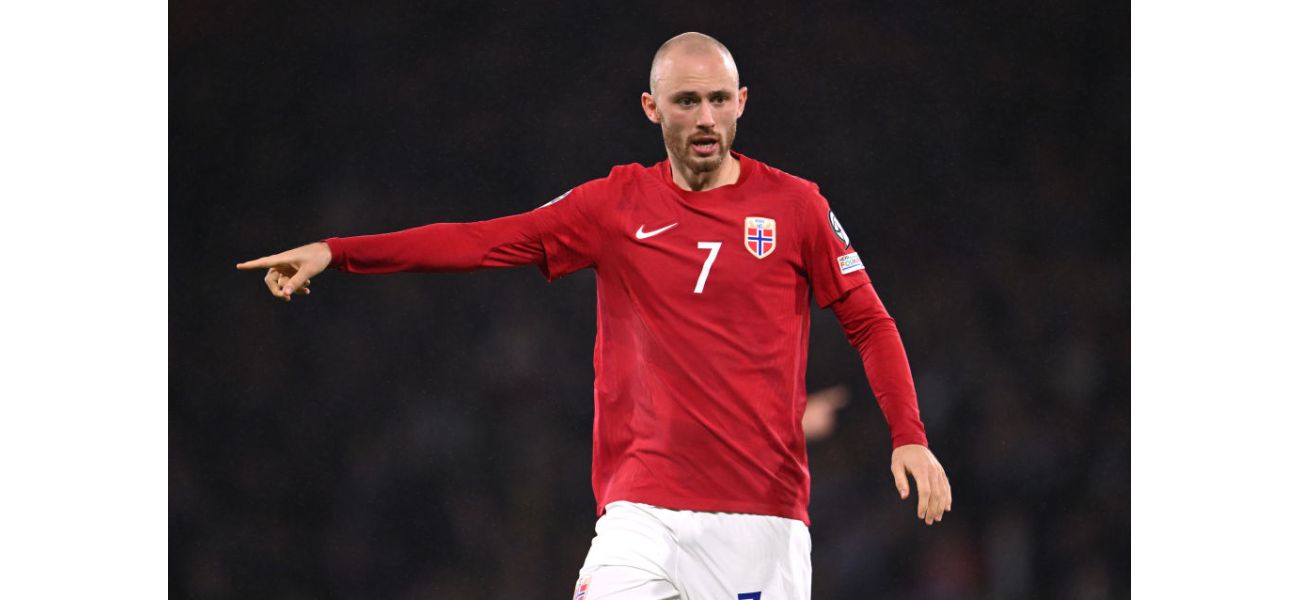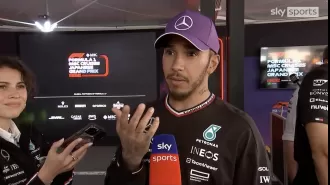Are top soccer players actually going to refuse to play as the sport nears a breaking point?
Could football's fate be determined through labor strikes or legal proceedings?
November 24th 2024.

It's interesting to note that even before the inaugural winner of the new Club World Cup was determined, FIFA President Gianni Infantino's name was already inscribed on the trophy. This 24-carat gold masterpiece, created by Tiffany & Co., was referred to as the ultimate club competition, with Infantino being hailed as the inspiration and founding president of the project. It's no secret that every post on Infantino's social media accounts must first receive his approval, and the wording on this trophy was no exception.
However, while some may find it vain to have one's name plastered on a trophy, it's the tournament itself that has caused FIFA a major headache. For years, concerns about player workload have been simmering below the surface, and this expanded tournament seems to have been the final straw. Players, who have not been properly consulted about changes to the schedule, have reached their limit. In fact, Manchester City midfielder Rodri, who is now out for the season with an ACL injury, stated that players were on the verge of taking strike action. Football unions are now turning to the courts in hopes of transforming the relationship between players and the game's powerbrokers.
Former Norwegian international, Fredrik Aursnes, who was at the peak of his career at the age of 28, decided to retire from international duty earlier this year. In his statement, Aursnes cited the relentless football calendar, which left him with no time to rest physically or recharge mentally. He stated that he wanted more time and freedom to prioritize other aspects of his life, apart from football. Although Aursnes' story didn't make headlines, it painted a worrisome picture. It's clear that players are struggling to keep up with the demands of the game.
Not only have international competitions like the European Championship and World Cup been expanded in recent years, but elite club level tournaments have also followed suit. Despite the scrapping of some cup replays, the new elongated format of the Champions League means that top-six Premier League clubs are still playing an average of over 50 competitive matches per season. This has had a twofold effect. Injuries have become more prevalent, with a record ten England players withdrawing from the recent international break due to injuries. According to Howden's yearly report on injuries, there was a 4% increase in injury instances across the five major European leagues last season. The Premier League, in particular, saw a 40.6% jump in players being sidelined due to injuries.
For those players who manage to stay fit, the match load can be overwhelming. Jude Bellingham, who made his professional debut at the age of 16, had already played in 251 games for club and country by the time he turned 21. This puts him ahead of former England players like Wayne Rooney and Steven Gerrard in terms of appearances at a young age. The increased fixture congestion has also led clubs to place unprecedented demands on younger players. Howden's analysis shows that in the 2023/24 season, Premier League players under 21 were sidelined for an average of 44 days per injury, a 187% increase compared to the 2020/21 season.
It's no wonder that players have started turning to their unions for help. According to Professional Footballers' Association chief executive Maheta Molango, this is the number one issue raised by PFA members playing in the Premier League, Europe, and for their country. While these players are aware of their privileged position, there are physical limitations to how far they can be pushed. The year-round football calendar, with an increasing number of games and expanded tournaments, is taking a toll on their well-being. As Molango puts it, "They are not robots."
There has been talk of strikes as a possible solution to this issue. Manchester City midfielder Rodri's comments about players being "close" to taking strike action marked a serious escalation. Although player unions had hinted at the possibility of strikes earlier in the year, this was one of the first times that an elite player had given the idea credibility in a public forum.
In the past, there have been instances of strikes in English football. In 1960, the PFA, led by Jimmy Hill, sought to abolish the maximum weekly wage limit for players. When the FA and Football League proposed a gradual increase in the limit, the PFA balloted its members, who overwhelmingly voted to strike. Just days before the planned strikes, the FA and Football League gave in and abolished the limit. In 2001, players again voted to strike when the Premier League wanted to reduce the payment unions received from domestic broadcast deals. A deal was eventually reached, averting a boycott of televised fixtures.
However, there are several obstacles that make a strike harder to achieve in reality. According to sports law expert and senior lecturer at Manchester Metropolitan University, Sarah Carrick, there are two ways in which players could strike collectively. The first is through the PFA or FIFPRO, where members would vote for or against the strike. However, this issue only affects a small portion of PFA members, making it difficult to garner a majority vote. Players from lower leagues may not have the same concerns as those in the top leagues, who are earning hundreds of thousands of pounds per week.
When the new Club World Cup trophy was unveiled, it was no surprise to see FIFA President Gianni Infantino's name inscribed on it. After all, he had been the driving force behind the creation of this prestigious 32-team tournament, which was being hailed as the ultimate club competition. The trophy, made of 24-carat gold and crafted by Tiffany & Co, paid tribute to Infantino as the project's inspiration and founding president. It was just another example of his influence and involvement in every aspect of the tournament.
But while some may see this as a mere act of vanity, the real issue at hand was the impact of this expanded tournament on players' workload. For years, there had been concerns about the physical and mental toll that the relentless football calendar was taking on players. And now, with the Club World Cup adding even more matches to an already packed schedule, it seemed that things had reached a breaking point.
Manchester City midfielder Rodri, who was sidelined for the rest of the season due to an ACL injury, spoke out about the players' frustration and even hinted at the possibility of strike action. And he was not alone in his sentiment. Football unions were now turning to the courts in an effort to change the dynamic between players and the game's governing body. It was clear that something needed to be done to address the players' concerns.
Fredrik Aursnes, a former Norwegian international, was one of the many players who had been struggling with the demanding schedule. Despite being in the prime of his career at 28 years old, Aursnes made the difficult decision to retire from international duty in March of this year. He cited the lack of rest and the constant focus on football as the main reasons for his decision. Aursnes' story may not have made headlines, but it shed light on the toll that the football calendar was taking on players.
And it wasn't just the international competitions that were causing problems. At the elite club level, the story was no different. With the new elongated Champions League format and the scrapping of cup replays, the top clubs in England were still playing an average of 50 competitive matches per season. This not only put a strain on the players' physical well-being but also led to unprecedented demands on younger players. The numbers spoke for themselves – the average number of days lost to injury for Premier League players under 21 had increased by 187% compared to the previous season.
It was no wonder that players were turning to their unions for help. Maheta Molango, chief executive of the Professional Footballers' Association, had heard the players' concerns firsthand. He acknowledged the privilege of being a professional footballer but also emphasized the physical limits that players were facing. With the non-stop schedule and the addition of more matches and tournaments, it was becoming too much for players to handle. They were not machines, after all.
The idea of a strike was not a new one. In fact, it had been discussed by player unions earlier in the year. But when Rodri mentioned the possibility of strike action, it was a game-changer. It was one of the first times that an elite player had put the idea out in the public domain. And it was a serious escalation.
But the reality was that a strike would not be easy to achieve. While players could take collective action through their unions, it was unlikely that they would garner enough support from their fellow players. The issue only affected a small portion of the members, and not everyone would be willing to take such drastic measures. It was a complicated situation, and there were no easy solutions.
In the past, there had been instances of strikes in English football – most notably in 1960 when the PFA successfully fought to abolish the maximum wage limit for players, and in 2001 when a boycott of televised games was narrowly avoided. But in the current landscape, with the issue only affecting a small group of players, it was uncertain if a strike would be possible.
In the end, it was clear that something needed to be done to address the players' concerns. Whether it was through strike action or other means, the players were determined to make their voices heard. They were not robots, and the physical and mental toll of the grueling football calendar was taking its toll. It was time for a change.
However, while some may find it vain to have one's name plastered on a trophy, it's the tournament itself that has caused FIFA a major headache. For years, concerns about player workload have been simmering below the surface, and this expanded tournament seems to have been the final straw. Players, who have not been properly consulted about changes to the schedule, have reached their limit. In fact, Manchester City midfielder Rodri, who is now out for the season with an ACL injury, stated that players were on the verge of taking strike action. Football unions are now turning to the courts in hopes of transforming the relationship between players and the game's powerbrokers.
Former Norwegian international, Fredrik Aursnes, who was at the peak of his career at the age of 28, decided to retire from international duty earlier this year. In his statement, Aursnes cited the relentless football calendar, which left him with no time to rest physically or recharge mentally. He stated that he wanted more time and freedom to prioritize other aspects of his life, apart from football. Although Aursnes' story didn't make headlines, it painted a worrisome picture. It's clear that players are struggling to keep up with the demands of the game.
Not only have international competitions like the European Championship and World Cup been expanded in recent years, but elite club level tournaments have also followed suit. Despite the scrapping of some cup replays, the new elongated format of the Champions League means that top-six Premier League clubs are still playing an average of over 50 competitive matches per season. This has had a twofold effect. Injuries have become more prevalent, with a record ten England players withdrawing from the recent international break due to injuries. According to Howden's yearly report on injuries, there was a 4% increase in injury instances across the five major European leagues last season. The Premier League, in particular, saw a 40.6% jump in players being sidelined due to injuries.
For those players who manage to stay fit, the match load can be overwhelming. Jude Bellingham, who made his professional debut at the age of 16, had already played in 251 games for club and country by the time he turned 21. This puts him ahead of former England players like Wayne Rooney and Steven Gerrard in terms of appearances at a young age. The increased fixture congestion has also led clubs to place unprecedented demands on younger players. Howden's analysis shows that in the 2023/24 season, Premier League players under 21 were sidelined for an average of 44 days per injury, a 187% increase compared to the 2020/21 season.
It's no wonder that players have started turning to their unions for help. According to Professional Footballers' Association chief executive Maheta Molango, this is the number one issue raised by PFA members playing in the Premier League, Europe, and for their country. While these players are aware of their privileged position, there are physical limitations to how far they can be pushed. The year-round football calendar, with an increasing number of games and expanded tournaments, is taking a toll on their well-being. As Molango puts it, "They are not robots."
There has been talk of strikes as a possible solution to this issue. Manchester City midfielder Rodri's comments about players being "close" to taking strike action marked a serious escalation. Although player unions had hinted at the possibility of strikes earlier in the year, this was one of the first times that an elite player had given the idea credibility in a public forum.
In the past, there have been instances of strikes in English football. In 1960, the PFA, led by Jimmy Hill, sought to abolish the maximum weekly wage limit for players. When the FA and Football League proposed a gradual increase in the limit, the PFA balloted its members, who overwhelmingly voted to strike. Just days before the planned strikes, the FA and Football League gave in and abolished the limit. In 2001, players again voted to strike when the Premier League wanted to reduce the payment unions received from domestic broadcast deals. A deal was eventually reached, averting a boycott of televised fixtures.
However, there are several obstacles that make a strike harder to achieve in reality. According to sports law expert and senior lecturer at Manchester Metropolitan University, Sarah Carrick, there are two ways in which players could strike collectively. The first is through the PFA or FIFPRO, where members would vote for or against the strike. However, this issue only affects a small portion of PFA members, making it difficult to garner a majority vote. Players from lower leagues may not have the same concerns as those in the top leagues, who are earning hundreds of thousands of pounds per week.
When the new Club World Cup trophy was unveiled, it was no surprise to see FIFA President Gianni Infantino's name inscribed on it. After all, he had been the driving force behind the creation of this prestigious 32-team tournament, which was being hailed as the ultimate club competition. The trophy, made of 24-carat gold and crafted by Tiffany & Co, paid tribute to Infantino as the project's inspiration and founding president. It was just another example of his influence and involvement in every aspect of the tournament.
But while some may see this as a mere act of vanity, the real issue at hand was the impact of this expanded tournament on players' workload. For years, there had been concerns about the physical and mental toll that the relentless football calendar was taking on players. And now, with the Club World Cup adding even more matches to an already packed schedule, it seemed that things had reached a breaking point.
Manchester City midfielder Rodri, who was sidelined for the rest of the season due to an ACL injury, spoke out about the players' frustration and even hinted at the possibility of strike action. And he was not alone in his sentiment. Football unions were now turning to the courts in an effort to change the dynamic between players and the game's governing body. It was clear that something needed to be done to address the players' concerns.
Fredrik Aursnes, a former Norwegian international, was one of the many players who had been struggling with the demanding schedule. Despite being in the prime of his career at 28 years old, Aursnes made the difficult decision to retire from international duty in March of this year. He cited the lack of rest and the constant focus on football as the main reasons for his decision. Aursnes' story may not have made headlines, but it shed light on the toll that the football calendar was taking on players.
And it wasn't just the international competitions that were causing problems. At the elite club level, the story was no different. With the new elongated Champions League format and the scrapping of cup replays, the top clubs in England were still playing an average of 50 competitive matches per season. This not only put a strain on the players' physical well-being but also led to unprecedented demands on younger players. The numbers spoke for themselves – the average number of days lost to injury for Premier League players under 21 had increased by 187% compared to the previous season.
It was no wonder that players were turning to their unions for help. Maheta Molango, chief executive of the Professional Footballers' Association, had heard the players' concerns firsthand. He acknowledged the privilege of being a professional footballer but also emphasized the physical limits that players were facing. With the non-stop schedule and the addition of more matches and tournaments, it was becoming too much for players to handle. They were not machines, after all.
The idea of a strike was not a new one. In fact, it had been discussed by player unions earlier in the year. But when Rodri mentioned the possibility of strike action, it was a game-changer. It was one of the first times that an elite player had put the idea out in the public domain. And it was a serious escalation.
But the reality was that a strike would not be easy to achieve. While players could take collective action through their unions, it was unlikely that they would garner enough support from their fellow players. The issue only affected a small portion of the members, and not everyone would be willing to take such drastic measures. It was a complicated situation, and there were no easy solutions.
In the past, there had been instances of strikes in English football – most notably in 1960 when the PFA successfully fought to abolish the maximum wage limit for players, and in 2001 when a boycott of televised games was narrowly avoided. But in the current landscape, with the issue only affecting a small group of players, it was uncertain if a strike would be possible.
In the end, it was clear that something needed to be done to address the players' concerns. Whether it was through strike action or other means, the players were determined to make their voices heard. They were not robots, and the physical and mental toll of the grueling football calendar was taking its toll. It was time for a change.
[This article has been trending online recently and has been generated with AI. Your feed is customized.]
[Generative AI is experimental.]
0
0
Submit Comment




